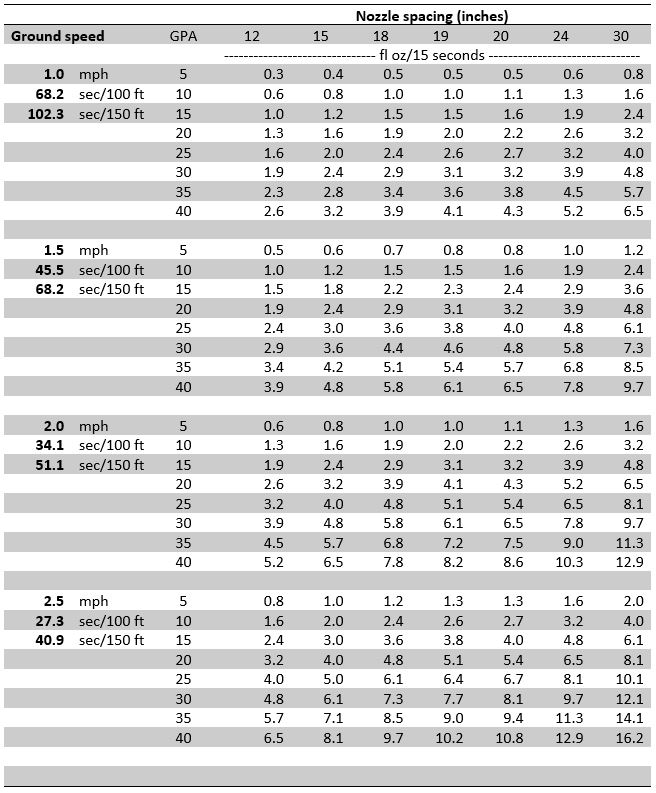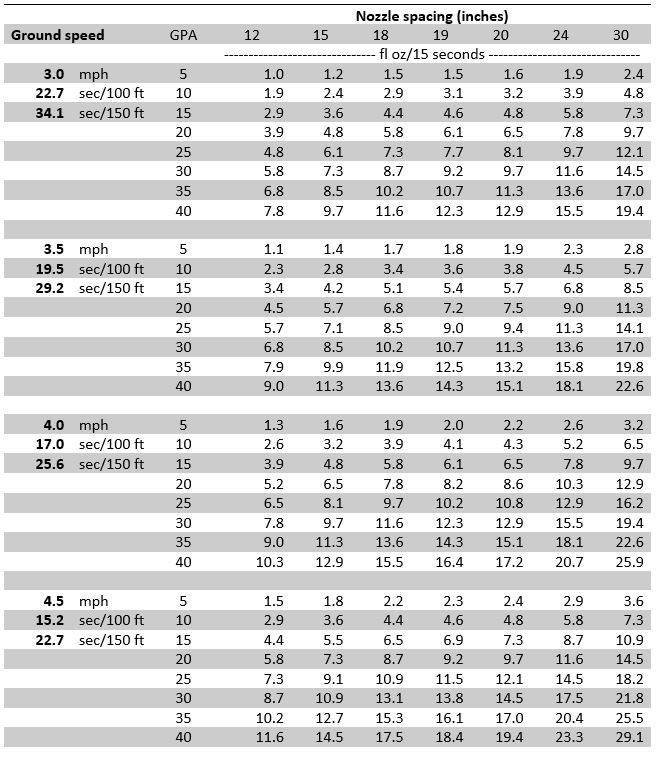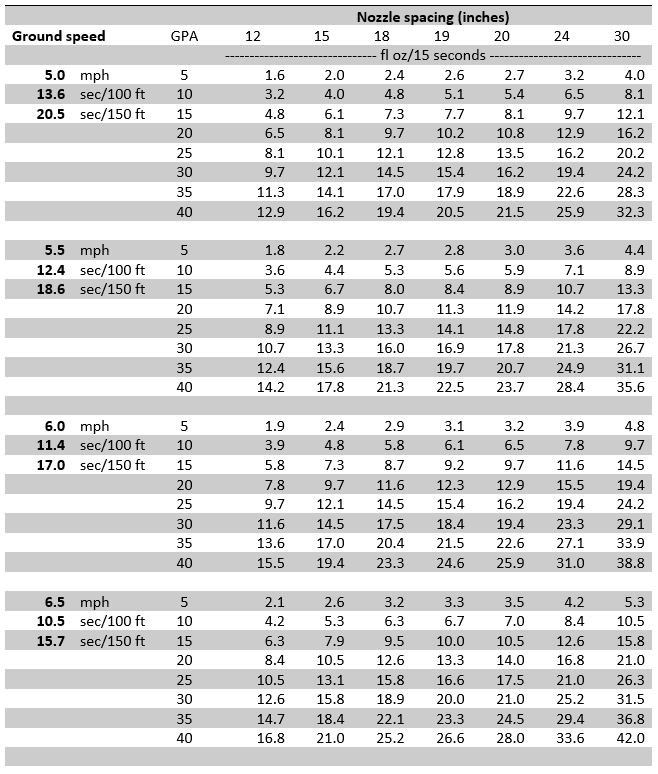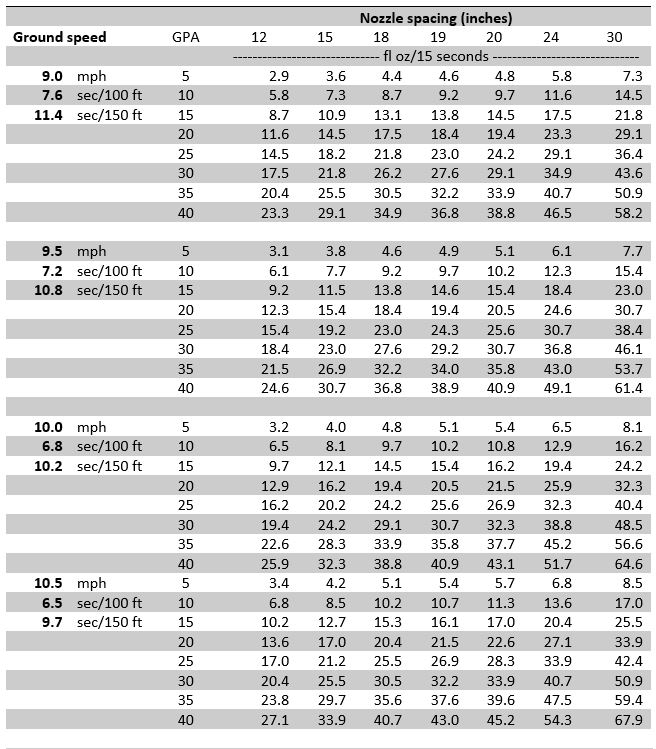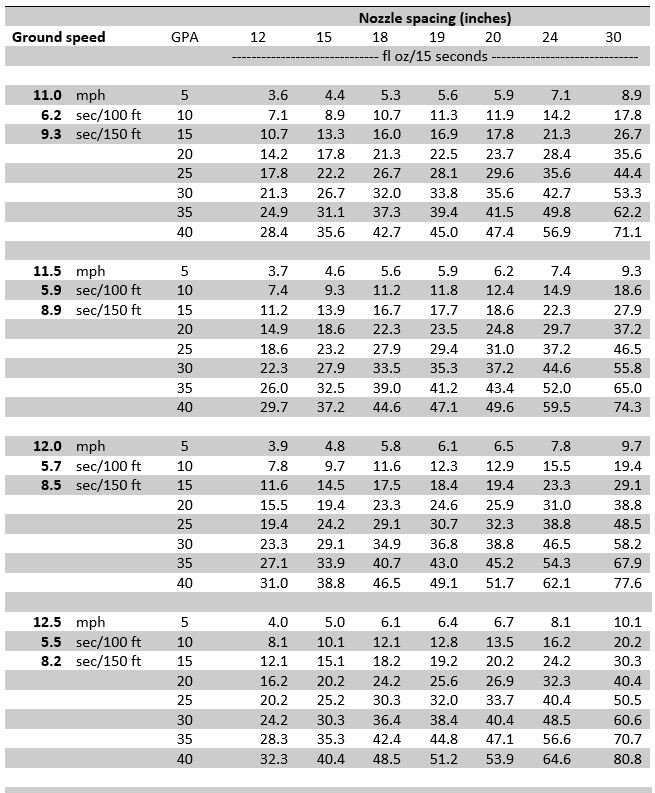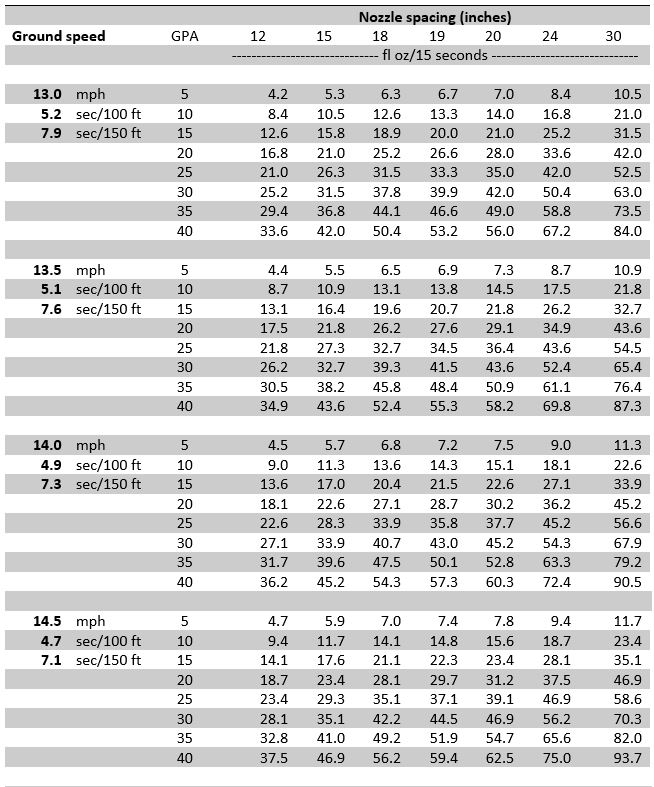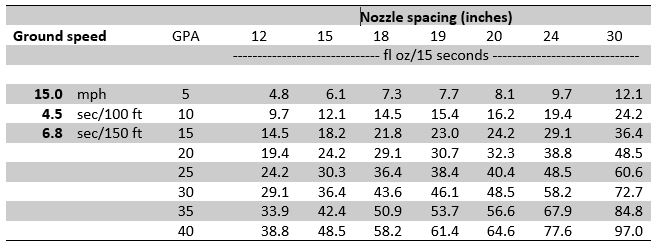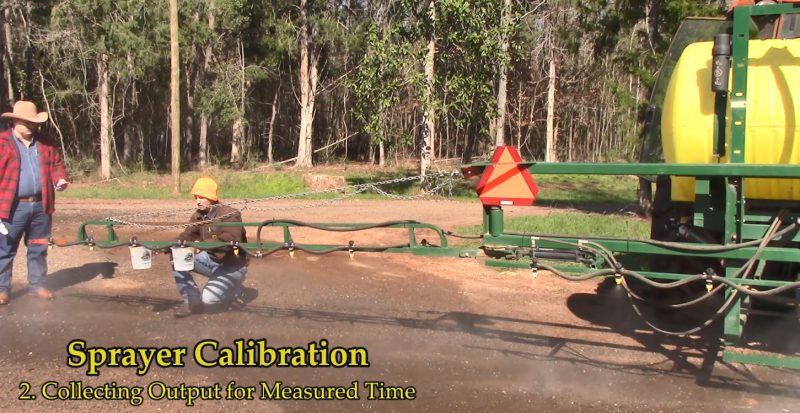
Pesticides are one of the higher input costs for crop production. Routine sprayer calibration is essential to ensure the correct amount of chemical is applied to each acre. Credit: Doug Mayo, UF/IFAS
Michael J. Mulvaney, Pratap Devkota, Ethan Carter, De Broughton, Mark Mauldin, UF/IFAS Extension State Specialists, Regional, and County Agents
The growing season is winding down, and soon harvest will be complete. This is the time of year to recalibrate your equipment, including sprayers.
Think about all the money you put through your nozzles. All those herbicides and fungicides add up to a lot of money. Then think about the fact that you don’t actually know how much of those expensive products you’re applying unless you’ve calibrated your sprayer. Calibrating your sprayer is a smart business decision that affects both your bottom line and the potential for weed and disease resistance on your farm. It’s time to figure out your actual spray volume and stop assuming your nozzles are close enough.
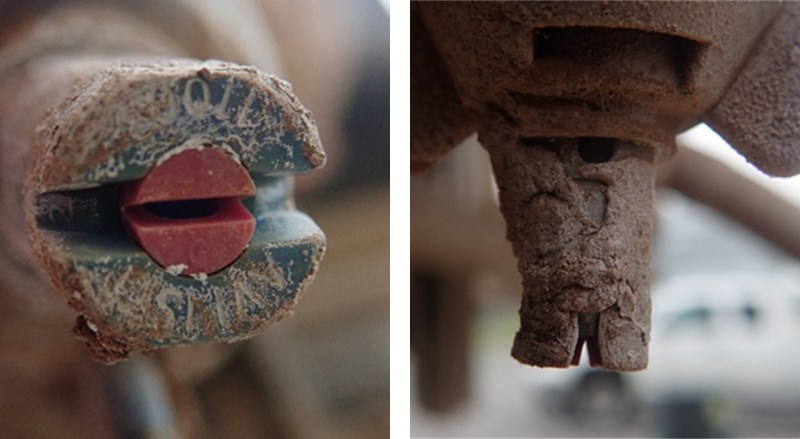
Figure 1. Think about all the money that goes through this nozzle and then ask yourself, “Do I really know how much this nozzle puts out?” Credit: M. Mulvaney, UF/IFAS
–
We all hate calibrating, which is why we don’t do it as often as we should. This article will make calibration easy and eliminate the math, so “too much math” can’t be your excuse for not calibrating.
Determining spray volume – the procedure is really very easy:
Step 1) Set your engine speed under field conditions, and note the RPM. You probably already know that.
Step 2) Set your tank pressure. A good starting point is in the middle of the operating range.
Step 3) Set your ground speed. You probably already know this too.
These numbers are now ‘set in stone,’ and you’ll spray at this RPM, tank pressure, and ground speed under all conditions. Write these values down and post them in the cab. Now, put a container under each nozzle and capture water for 15 seconds. To find your spray volume, use the tables below.
–
Using the Tables
Step 1) Find the table with your ground speed
Step 2) Find the column with your nozzle spacing
Step 3) Move down the column until you find the closest value to the amount of water you collected from a single nozzle
Step 4) Move left along the row to find the spray volume (GPA).
For example, suppose your running speed is 8 mph with an 18-inch nozzle spacing, with your engine speed and tank pressure set for field application. If you collect 10.0 fl. oz. in 15 seconds from each nozzle, you are running somewhere between 10 and 15 gallons per acre spray volume. To determine a more exact volume, you can extrapolate the GPA using the following tables (10 fl. oz. is about halfway between 7.8 and 11.6, so you are about halfway between 10 and 15 GPA, or about 12.5 GPA (Table 1). Even more accurately, we can use the GPA Equation below to determine that your spray volume is 12.9 gallons per acre in this example.
–
Since you’re calibrating, you should consider replacing your nozzle tips beforehand. But even if you don’t, check for clogged screens and damaged nozzles. The calibration procedure will tell you if one or more nozzles is seriously out of whack, since you’ll see that the output volume is significantly different than the others. Those nozzles obviously need to be checked or replaced.
Now you can spray knowing that you’re not wasting money from over application, or losing efficacy and possibly creating resistance issues with under application. It’s a win-win.
Download the PDF (printer friendly version) of this article and tables to print out and keep in handy locations for calibration:
Sprayer Calibration Tables – Calibration Made Easy
–
Table 1 – Sprayer Calibration Tables
Broadcast sprayer calibration chart for common ground speeds, spray volumes, and nozzle spacings. The values are the amount of water to be collected per nozzle in 15 seconds. Values within the table are common for sprayer applications in our region. Use PDF link to print these out to and post at your mix-load facility.
Additional Reference Publications
Dean, T. W., & Fishel, F. M. (2017). Broadcast Boom Sprayer Calibration. EDIS, PI-24, 3.
Ferrell, J. A., Sellers, B. S., & Leon, R. (2015). Calibration of Herbicide Applicators. EDIS, SS-AGR-102.
Fishel, F. M. (2017). Boom Sprayer Nozzle Performance Test. EDIS, PI-23, 4.
- Four Early-Season Lessons from 2020 Peanut Production - April 9, 2021
- Sprayer Calibration Tables – Calibration Made Easy - October 30, 2020
- Stand Issues – Should You Replant Your Peanut Field? - May 15, 2020


